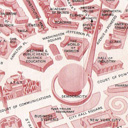0300 'Gesamtkunstwerk' World’s Fair. Revisioning International Exhibitions
Introduction to the RIHA Journal Special Issue
Identifiers (Article)
Abstract
From their beginnings in the mid-nineteenth century, the world’s fairs sought to generate a synthesized body of knowledge about the world by gathering an encyclopedic and didactic collection of objects from a wide array of fields: technology, machinery, handicrafts, the visual arts, performance, and ethnography – knowledge made visible and experienced through artifacts sourced from all over the world. This expanded visual experience can also be understood as one that interprets the gaze as a catalyst for a multi-sensory perception and categorization of material culture, of both two- and three-dimensional objects of vision. Thus, these exhibitions not only synthesized 'the world', but they also synthesized arts, handicrafts, architecture, and technology into an imagined Gesamtkunstwerk. The objects and works of art – handcrafted or machine-made – displayed at the world’s fairs were conceived as a mass spectacle as they were turned into the signifiers of a narrative – imagined and presented as coherent – of technological progress, colonial expansion, and artistic innovation. The colonized regions were to stand in contrast to this, with ethnographica and handicrafts presented as traditional, 'authentic'. Nevertheless, a complex network of "shared histories" and transnational interconnections became manifest at the world’s fairs.
Statistics


License

This work is licensed under a Creative Commons Attribution-NonCommercial-NoDerivatives 4.0 International License.



